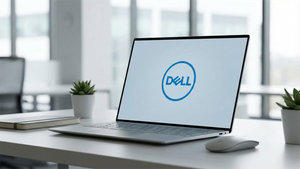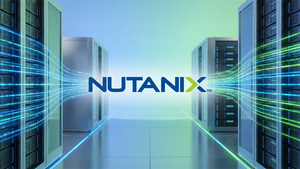
As October 28, 2025, draws to a close, financial markets are buzzing with a confluence of positive developments, signaling robust investor confidence and a potentially transformative period for key sectors. The Dow Jones Industrial Average (DJIA) has surged to unprecedented levels, marking new all-time highs and extending a powerful rally. Simultaneously, shares of logistics giant UPS (NYSE: UPS) have experienced a significant jump following an impressive earnings report, while tech titan Microsoft (NASDAQ: MSFT) is firmly establishing its position at the pinnacle of corporate valuation, nearing or even surpassing a staggering $4 trillion market capitalization. These movements collectively paint a picture of a market invigorated by easing economic pressures, strategic corporate maneuvers, and the relentless march of technological innovation.
The immediate implications of these events are profound, suggesting a "risk-on" sentiment pervading the global financial landscape. The record-breaking performance of the Dow, alongside other major indices, indicates a broad-based optimism driven by expectations of favorable monetary policy and a thawing in international trade relations. UPS's strong showing, a bellwether for global commerce, hints at underlying resilience in consumer demand and effective corporate restructuring. Meanwhile, Microsoft's ascendance to the $4 trillion club underscores the dominant role of artificial intelligence and cloud computing in shaping the future economy, solidifying the influence of mega-cap tech companies on overall market direction and investor portfolios.
Market Momentum: Dow's Historic Climb, UPS's Strategic Gains, and Microsoft's Valuation Leap
The Dow Jones Industrial Average has been on an extraordinary ascent, culminating in a new all-time high above 47,500 points on October 28, 2025. This latest surge, which saw the index rise 0.7% in early trading, extends a remarkable rally that included a 200-point jump on October 27, closing at 47544.59—its 14th record close of the year. This impressive performance is fueled by a potent mix of macroeconomic factors and corporate strength. Optimism surrounding a potential US-China trade deal, which could avert steep tariffs and boost global commerce, is a primary catalyst. Adding to this, cooler-than-expected September Consumer Price Index (CPI) data, showing a 3.0% year-over-year rise, has intensified speculation of more accommodative monetary policy from the Federal Reserve, with markets pricing in a 25-basis-point interest rate cut this week and cumulative cuts totaling 0.75% by year-end.
United Parcel Service (NYSE: UPS) shares witnessed a dramatic leap of over 19% in pre-market trading on October 28, 2025, extending into early action, after the company announced robust third-quarter 2025 results that comfortably exceeded analyst expectations. UPS reported adjusted earnings per share (EPS) of $1.74, significantly outperforming consensus estimates of $1.30 or $1.32. The company's revenue of $21.4 billion also surpassed projections. Investor confidence was further bolstered by an optimistic outlook for the fourth quarter, with anticipated revenue of $24 billion, again exceeding analyst consensus. The company highlighted substantial savings of approximately $2.2 billion stemming from its ongoing restructuring efforts. This strategic recalibration includes a focus on higher-margin customers, a burgeoning healthcare logistics segment, and a massive downsizing package that will eliminate 34,000 jobs this year, aiming to reduce annual costs by $3.5 billion.
Concurrently, Microsoft (NASDAQ: MSFT) is solidifying its position among the world's most valuable companies, nearing or having already breached the $4 trillion market capitalization mark on October 28, 2025. Reports placed its market cap around $3.95 trillion and $3.892 trillion, with some sources confirming it had surpassed $4 trillion during trading, making it the second U.S. company after Nvidia (NASDAQ: NVDA) to achieve this milestone. A significant factor contributing to this surge, which saw Microsoft shares jump 2.7-3% in early trade, was the announcement of a strategic agreement with OpenAI, valuing Microsoft's stake in the AI powerhouse at an estimated $135 billion. This move underscores Microsoft's aggressive investments in artificial intelligence, which, alongside its robust Azure cloud services and ubiquitous Office products, are driving double-digit revenue and EPS growth projections, positioning the company at the forefront of the AI revolution.
Corporate Fortunes: Winners, Losers, and Market Ripple Effects
The current market movements are creating clear winners and losers across various sectors. For UPS (NYSE: UPS), the immediate winners are its shareholders, who are reaping the benefits of a significant stock surge. The company's strategic shift towards higher-margin customers and its growing healthcare logistics segment position it favorably for future profitability, potentially attracting more institutional investors. However, the announcement of 34,000 job cuts, while financially beneficial for the company, represents a significant challenge for the affected employees, highlighting the human cost of corporate restructuring. Competitors such as FedEx (NYSE: FDX) will likely face increased pressure to demonstrate similar efficiencies and strategic pivots to maintain market share and investor confidence in a competitive logistics landscape. Smaller regional carriers might also feel the squeeze as UPS optimizes its operations. Meanwhile, the broader e-commerce sector could see improved delivery efficiencies, but also potentially higher costs for lower-margin packages as UPS recalibrates its service offerings.
Microsoft (NASDAQ: MSFT) and its investors are undoubtedly major beneficiaries of its soaring valuation. The company's deep integration into the artificial intelligence ecosystem through its OpenAI partnership, coupled with the continued strength of its Azure cloud platform and enterprise software, solidifies its position as a tech powerhouse. This success puts pressure on rivals like Apple (NASDAQ: AAPL) and Alphabet (NASDAQ: GOOGL), which, while also immensely valuable, are in a constant race for AI dominance and market leadership. Microsoft's strategic investments could compel competitors to accelerate their own AI initiatives to avoid falling behind, potentially leading to a renewed wave of innovation and M&A activity in the tech sector. Furthermore, the massive market cap of Microsoft, along with other "Magnificent Seven" companies, has a disproportionate impact on major indices like the S&P 500, meaning their performance significantly sways overall market sentiment and returns.
The general rise in the Dow Jones Industrial Average signals a favorable environment for many of its constituent companies, particularly those benefiting from stable economic growth, easing inflation, and potentially lower borrowing costs. Sectors sensitive to consumer spending and global trade, such as industrials and financials, stand to gain. However, the market's current elevated state also implies that companies must continue to deliver strong earnings and positive outlooks to justify their valuations. Any disappointment from major corporate reports could lead to swift corrections, affecting companies that might be perceived as overvalued or those with weaker fundamentals. This scenario encourages prudent financial management and strategic foresight across the board, as the rising tide may not lift all boats equally if underlying performance falters.
Wider Significance: A Confluence of Economic and Technological Shifts
The current market landscape, characterized by the Dow's record-breaking ascent, UPS's strategic resurgence, and Microsoft's valuation milestone, reflects a significant confluence of broader economic and technological trends. The Dow's robust performance is a strong indicator of improving macroeconomic conditions, with easing inflationary pressures and the Federal Reserve's anticipated interest rate cuts signaling a more accommodating monetary policy. This environment of lower borrowing costs is generally conducive to corporate investment and consumer spending, fostering an optimistic outlook for economic growth. The progress in US-China trade negotiations further underscores a global push towards stability and reduced geopolitical friction, which can unlock significant economic potential for multinational corporations and global supply chains. This "risk-on" sentiment suggests that investors are increasingly confident in the fundamental strength of the economy and the earnings power of public companies.
UPS's impressive earnings and strategic restructuring are deeply intertwined with the evolving dynamics of global supply chains and the e-commerce boom. The company's focus on higher-margin customers and its burgeoning healthcare logistics segment highlights a shift in the delivery industry towards specialized, high-value services rather than solely relying on volume. The massive job cuts, while stark, underscore a broader trend across industries towards efficiency gains through automation and optimization in response to fluctuating demand and cost pressures. This recalibration by a logistics giant like UPS is a bellwether for the health and adaptability of the global trade network, indicating that companies are actively adjusting their models to navigate a post-pandemic world characterized by both opportunities in digital commerce and the need for lean operations.
Microsoft's journey towards a $4 trillion valuation is a testament to the transformative power of artificial intelligence and the enduring dominance of cloud computing. Its strategic partnership with OpenAI positions it at the epicenter of the AI revolution, demonstrating how significant investments in cutting-edge technology can drive exponential growth and market leadership. This trend has profound implications for the entire tech industry, signaling that companies failing to innovate aggressively in AI and cloud services risk being left behind. Furthermore, the sheer scale of Microsoft's market capitalization, alongside other tech giants, raises questions about regulatory oversight and potential anti-trust concerns, as these companies wield immense influence over global economies and digital infrastructure. Historically, such concentrations of wealth and power have often invited increased scrutiny from governments worldwide, a dynamic that will likely intensify as these valuations continue to climb.
What Comes Next: Navigating Opportunities and Challenges
Looking ahead, the financial markets are poised for a period of both significant opportunity and potential challenges. In the short term, investors will be closely watching for confirmation of the anticipated 25-basis-point interest rate cut from the Federal Reserve this week, as well as concrete developments regarding the US-China trade deal. Any positive news on these fronts could provide further impetus for the Dow and broader market indices. Corporate earnings reports from other major companies, particularly those in the technology sector and other Dow components, will also be critical in sustaining the current optimistic sentiment. Disappointments in earnings could quickly temper enthusiasm and introduce volatility. For UPS (NYSE: UPS), the focus will be on the execution of its strategic recalibration and the realization of its targeted cost savings, with upcoming quarterly reports providing crucial insights into the effectiveness of its new business model and its ability to maintain momentum in its higher-margin segments.
In the long term, the trajectory of Microsoft (NASDAQ: MSFT) will largely depend on its continued leadership in artificial intelligence and cloud computing. Further innovations in AI, successful integration of advanced AI capabilities across its product suite, and sustained growth of its Azure platform will be key drivers for its valuation. The AI arms race among tech giants will intensify, potentially leading to new strategic partnerships, acquisitions, or even disruptive technologies that could reshape the competitive landscape. For the broader market, the sustainability of the current rally hinges on several factors, including continued easing of inflation, stable economic growth, and the avoidance of major geopolitical shocks. The evolution of global trade relations, particularly between the US and China, will also play a significant role in shaping the economic environment.
Potential strategic pivots for companies across various sectors will be crucial. Businesses that can adapt to evolving consumer behaviors, embrace technological advancements like AI, and optimize their operational efficiencies, much like UPS is attempting, will be best positioned for success. Market opportunities may emerge in sectors benefiting from lower interest rates, such as real estate and infrastructure, or in niche areas of technology driven by AI innovation. However, challenges loom, including the potential for market overvaluation, increased regulatory scrutiny on dominant tech firms, and the ongoing need to manage supply chain complexities and labor market dynamics. Investors should prepare for potential scenarios ranging from continued steady growth to periods of heightened volatility, especially if economic data or corporate earnings deviate from current optimistic expectations.
Wrap-Up: A Market at an Inflection Point
The current financial narrative, defined by the Dow Jones Industrial Average's record-setting performance, UPS's impressive earnings-driven surge, and Microsoft's ascent towards a $4 trillion valuation, signifies a market at an intriguing inflection point. The key takeaways from these developments are clear: investor confidence is robust, buoyed by the prospect of favorable monetary policy and a more stable global trade environment. Corporate strategic initiatives, particularly those focused on efficiency and technological leadership, are being richly rewarded. The undeniable influence of artificial intelligence and cloud computing, epitomized by Microsoft's colossal market capitalization, continues to reshape industries and drive substantial value creation.
Moving forward, the market appears poised for continued growth, albeit with an underlying need for vigilance. The confluence of easing inflation, anticipated interest rate cuts, and positive trade developments provides a strong foundation. However, the elevated valuations, especially in the tech sector, underscore the importance of sustained corporate performance and innovation. Any significant deviation from the expected economic or earnings trajectory could introduce periods of correction or increased volatility.
Investors should closely watch several key indicators in the coming months. The Federal Reserve's actions regarding interest rates, the progress of US-China trade negotiations, and the upcoming quarterly earnings reports from major corporations will be paramount. Furthermore, the pace of AI development and adoption, along with any regulatory responses to the growing influence of tech giants, will shape the long-term investment landscape. The current market buoyancy reflects a belief in continued economic expansion and technological advancement, but as always, a nuanced understanding of both opportunities and risks will be essential for navigating the path ahead.
This content is intended for informational purposes only and is not financial advice






